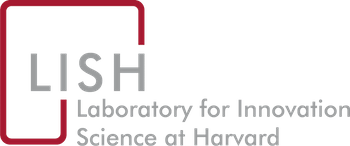Crowdsourcing & Open Innovation
. 2014. Houston, We Have a Problem: NASA and Open Innovation (A). Harvard Business School Case. Harvard Business School. Publisher's VersionAbstract
. 2011. Innovation and the Challenge of Novelty: The Novelty-Confirmation-Transformation Cycle in Software and Science. Harvard Business School Publishing. Publisher's VersionAbstract
. 2014. Havas: Change Faster. Harvard Business School Multimedia/Video Case. Harvard Business School. Publisher's VersionAbstract
. 2010. “Open Platform Strategies and Innovation: Granting Access vs. Devolving Control.” Management Science, 56, 10, Pp. 1849-1872. Publisher's VersionAbstract
. 2018. “Charitable Giving in the Laboratory: Advantages of the Piecewise Linear Public Good Game.” In The Economics of Philanthropy: Donations and Fundraising, . MIT Press. Publisher's Version
. 2012. Innovation at Charlotte-Mecklenburg Schools. Harvard Business School Case. Harvard Business School. Publisher's VersionAbstract
. 2015. OpenIDEO. Harvard Business School Teaching Notes. Harvard Business School. Publisher's VersionAbstract
. 2015. “Unpaid Crowd Complementors: The Platform Network Effect Mirage.” Strategic Management Journal, 36, 12, Pp. 1761-1777. Publisher's VersionAbstract
. 2014. Netflix: Designing the Netflix Prize (B). Harvard Business School Case Supplement. Harvard Business School. Publisher's VersionAbstract
. 2014. Havas: Change Faster. Harvard Business School Teaching Plan. Harvard Business School. Publisher's VersionAbstract
. 2012. “The Confederacy of Heterogeneous Software Organizations and Heterogeneous Developers: Field Experimental Evidence on Sorting and Worker Effort.” In The Rate and Direction of Inventive Activity Revisited, . Chicago, IL: University of Chicago Press. Publisher's VersionAbstract
. 2014. Nivea (A). Harvard Business School Case. Harvard Business School. Publisher's VersionAbstract
. 2011. Myelin Repair Foundation: Accelerating Drug Discovery Through Collaboration (TN). Harvard Business School Teaching Notes. Harvard Business School. Publisher's VersionAbstract
